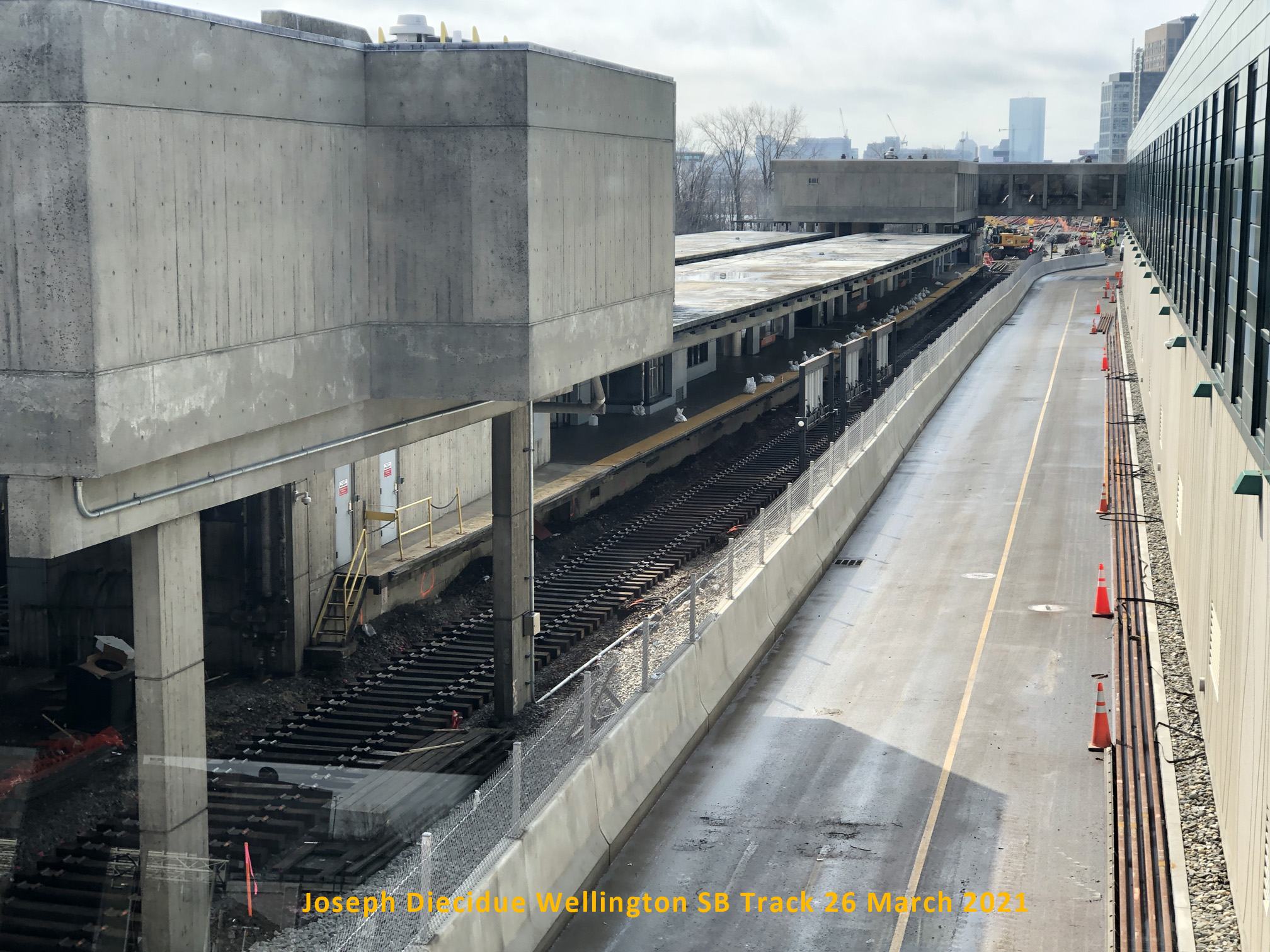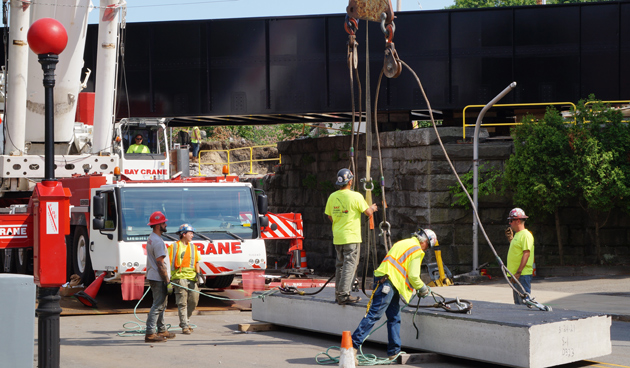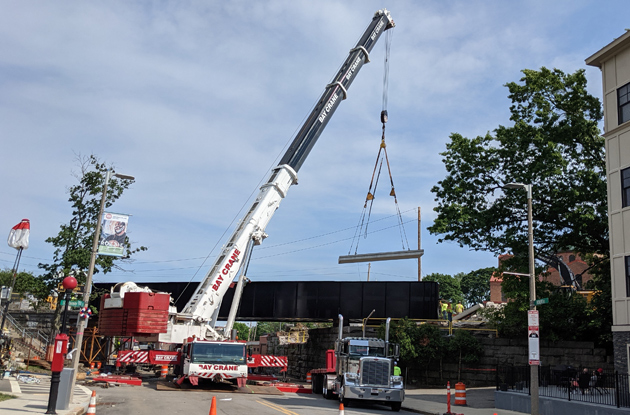You are using an out of date browser. It may not display this or other websites correctly.
You should upgrade or use an alternative browser.
You should upgrade or use an alternative browser.
MBTA Construction Projects
- Thread starter justin
- Start date
- Joined
- Jan 22, 2012
- Messages
- 5,078
- Reaction score
- 1,661
Not to drag this out with a "me too" but the broken image does link to the proper image. Weird.
- Joined
- Dec 10, 2011
- Messages
- 5,599
- Reaction score
- 2,717
Will it be a 3 track crossing (Cape Flyer, Dinner Train, & Propane?)Project will finish with a full do-over of the MA 28 grade crossing and traffic signals.
Looks like it will be a four-track crossing at Route 28. Details are in the attached PDFs on the commbuys website: https://www.commbuys.com/bso/extern...100-0T100-49904&external=true&parentUrl=close
The state also has plans in the works to rebuild portions of Yarmouth Road, including the intersection with Route 28, as well as (I believe) a bike path parallel to Yarmouth Road. I assume the crossing work is being done with these other projects in mind.
The state also has plans in the works to rebuild portions of Yarmouth Road, including the intersection with Route 28, as well as (I believe) a bike path parallel to Yarmouth Road. I assume the crossing work is being done with these other projects in mind.
F-Line to Dudley
Senior Member
- Joined
- Nov 2, 2010
- Messages
- 9,545
- Reaction score
- 10,397
Looks like it will be a four-track crossing at Route 28. Details are in the attached PDFs on the commbuys website: https://www.commbuys.com/bso/extern...100-0T100-49904&external=true&parentUrl=close
The state also has plans in the works to rebuild portions of Yarmouth Road, including the intersection with Route 28, as well as (I believe) a bike path parallel to Yarmouth Road. I assume the crossing work is being done with these other projects in mind.
Yes. This was the year MassHighway was slated to start jackhammering up 28 for the rebuild project (think most of those work contracts were already inked prior). So Phase II of the yard rebuild requiring the crossing realignment got synced accordingly with the pre-programmed road work, following last year's scope of Phase I yard rebuild tasks that stuck strictly to the south end of the yard further from the road.
F-Line to Dudley
Senior Member
- Joined
- Nov 2, 2010
- Messages
- 9,545
- Reaction score
- 10,397
The switch the Orange Line train derailed on last week at Wellington got replaced today. . .

F-Line to Dudley
Senior Member
- Joined
- Nov 2, 2010
- Messages
- 9,545
- Reaction score
- 10,397
Today: trailing crossovers (by Route 16) and the inbound platform track. . .


F-Line to Dudley
Senior Member
- Joined
- Nov 2, 2010
- Messages
- 9,545
- Reaction score
- 10,397

They've been working on the railroad, all the livelong day
After one crew spent last night on equipment that gnawed away the old Needham Line bridge over Robert Street in Roslindale Square, another crew came in this morning to get the new bridge into place and ready for trains on Monday. Read more.
Robert St. bridge @ Roslindale Station on the Needham Line is being rapid-replaced throughout this weekend. New decking is now in-place.


They've been working on the railroad, all the livelong day
After one crew spent last night on equipment that gnawed away the old Needham Line bridge over Robert Street in Roslindale Square, another crew came in this morning to get the new bridge into place and ready for trains on Monday. Read more.www.universalhub.com
Robert St. bridge @ Roslindale Station on the Needham Line is being rapid-replaced throughout this weekend. New decking is now in-place.

Will the MBTA continue to deploy such rapid replacements across the system when bridges need to be replaced?
Also, I'd point to the inciteful comment on the article you shared regarding trains going over at slow speeds for the first few days.
- Joined
- Dec 10, 2011
- Messages
- 5,599
- Reaction score
- 2,717
Will the MBTA continue to deploy such rapid replacements across the system when bridges need to be replaced?
Maybe? Probably? It has become pretty standard, but conditions do vary. I think the Lynn Fells Pkwy bridge in Melrose (below) will be replaced in two quick swaps.
Rail Bridge Replacements | Projects | MBTA
Official website of the MBTA -- schedules, maps, and fare information for Greater Boston's public transportation system, including subway, commuter rail, bus routes, and boat lines.
 www.mbta.com
www.mbta.com
Between 2020 and 2023, we'll replace the following bridges, with construction expected to start in this order:
Why These Bridges Are Part of the Same Project
- Bacon Street Bridge – Framingham/Worcester Line
- Intervale Road Bridge – Framingham/Worcester Line
- High Line Bridge – Lowell Line
- Parker Street Bridge – Haverhill Line
- Lynn Fells Parkway Bridge – Haverhill Line
- Commercial Street Bridge – Newburyport/Rockport Line
We’re using a design-build contracting method for the 6 bridge replacements that are part of the MBTA Rail Bridge Replacement Project, which will:
- Reduce design and construction time
- Improve communication between the contractor and designer
- Provide a single point of responsibility for both the design and construction.
- Promote collaboration between engineers, the contractor, and MBTA staff
RandomWalk
Senior Member
- Joined
- Feb 2, 2014
- Messages
- 3,314
- Reaction score
- 5,174
Interesting how the High Line is the only one which is not being replaced in-place. Instead, it’s shifting northward.
F-Line to Dudley
Senior Member
- Joined
- Nov 2, 2010
- Messages
- 9,545
- Reaction score
- 10,397
High Line (a.k.a. Lowell Line over Boston Engine Terminal) is a vertical clearance bottleneck for freights, and would prevent most of the backside of BET from ever being electrified for wyeing moves if it weren't raised. Has to be redone adjacent on new/taller abutments rather than rehabbed/re-decked in-situ so they can add some height, and do as a different abutment configuration that can cup a thinner deck not nearly as chunky on the underside as the current one. See Street View: it's a real shorty.Interesting how the High Line is the only one which is not being replaced in-place. Instead, it’s shifting northward.
F-Line to Dudley
Senior Member
- Joined
- Nov 2, 2010
- Messages
- 9,545
- Reaction score
- 10,397
Will the MBTA continue to deploy such rapid replacements across the system when bridges need to be replaced?
Also, I'd point to the inciteful comment on the article you shared regarding trains going over at slow speeds for the first few days.
Another subtle wrinkle with this one, from a Commuter Rail employee on RR.net. . .
People ask "Why not pre-provision for double-track or Orange Line conversion? This is just another single-track deck!" Ah...but there's a subtle asymmetry to the replacement deck, such that one of its side girders is designed to snap into place with some future adjacent deck TBD to become a center girder on a seamless twin-deck. The abutments--which used to be tri-track--were fully reconditioned as part of the project, so the act of future double-tracking here simply requires prefabbing a second deck with only *one* side girder, lifting it into place, and bolting it to this deck's girder on the side form-fitted for expansion. Thus saving money overall and playing it very much smarter than a mere "two decks for twice the price" proposition that begs the obvious "Why not now?" question.
They're getting demonstrably more clever about this as they gain more working experience with these rapid replacement jobs.
F-Line to Dudley
Senior Member
- Joined
- Nov 2, 2010
- Messages
- 9,545
- Reaction score
- 10,397
1927. In prep for the 1928-replacement North Station, B&M did a large reconfiguration of the approaches. The NH Main used to continue going straight on the path of the current GLX main and former Pan Am Yard 8, then wrap alongside the Fitchburg Line into the drawbridges rather than flying over everything and merging in with the Eastern/Western Routes. It was likely separated to keep the pax trains out of freight yard limits. Since Innerbelt Rd. didn't exist back then and everything in sight was B&M train yard property with widely scattered buildings, they just dumped some embankment dirt and did up the High Line on-the-quick.This reminds me of something I've been wondering: when was the High Line built? I assume it was to separate passenger trains headed for North Station so they didn't have to go through the freight yards.
Do you think given (presumably) much more limited current freight volumes that reversion to the pre-1928 routing would ever happen? Removal of that length of track would open up that entire swath for redevelopment, although you've still got what looks like an industrial access track along New Washington.1927. In prep for the 1928-replacement North Station, B&M did a large reconfiguration of the approaches. The NH Main used to continue going straight on the path of the current GLX main and former Pan Am Yard 8, then wrap alongside the Fitchburg Line into the drawbridges rather than flying over everything and merging in with the Eastern/Western Routes. It was likely separated to keep the pax trains out of freight yard limits. Since Innerbelt Rd. didn't exist back then and everything in sight was B&M train yard property with widely scattered buildings, they just dumped some embankment dirt and did up the High Line on-the-quick.
F-Line to Dudley
Senior Member
- Joined
- Nov 2, 2010
- Messages
- 9,545
- Reaction score
- 10,397
If they were thinking of that, they would've done it already as part of GLX design because that would've been the time to do it. But they didn't...the GLX land is spoken-for...and they can't even take the marbles out of their mouth on whether a single track of freight-idling wraparound track will ever be reinstated so it's probably overestimating by a lot the intrepidness of the planners to have thought of that as a consideration in the first place. That ship has almost certainly sailed. Arguably it sailed in 2008 when the T and Pan Am consumated their land swaps all throughout here for the project.Do you think given (presumably) much more limited current freight volumes that reversion to the pre-1928 routing would ever happen? Removal of that length of track would open up that entire swath for redevelopment, although you've still got what looks like an industrial access track along New Washington.
The self-important Brickbottomites, as we discussed a couple weeks ago here, can't even be arsed to ask for basic safety upgrades to the hamster killtubes on Innerbelt, so whatever arguments they might've had in their favor about the embankment harshing on parcel redev was simply left unspoken forevermore to their own detriment. The horrifying pedestrian environment on that street can definitely be improved there without much cost if they gave a damn enough to advocate for replacements for the killtubes, but there's no way any too-late calls to tear down the embankment are ever going to be listened to now. They had their chance for that when GLX was in design 10+ years ago, and sat on their hands.
If we had a do-over (how about NO since we've been waiting this long!) it would probably be slightly better to have the NH Main tie into the Fitchburg again if the junction were flying in the Red Bridge area instead of flat. Eliminates an S-curve, and probably could've worked with GLX, the Community Path, the freight wraparound, and the GLX VMF leads in the same vicinity with slightly more precise slotting and *at most* maybe a land swap with Triumvirate's rear wraparound service driveway. But the degree of difference is more 'feng sui' than something you'd notice with a stopwatch, so definitely not something to second-guess after the fact. What we've got works just fine here. It's just...once again...ironic that the Brickbottomites couldn't be arsed to care about that giant earthen berm bisecting their narnia-hood while they demand to be waited on hand-and-foot over every other splitting-hairs touch around them. That blind spot is totally on them.
ceo
Active Member
- Joined
- May 4, 2009
- Messages
- 641
- Reaction score
- 836
Since Brickbottom (I assume you mean the artists' community) is on the other side of the ROW from what I call the "nostrils", it's unclear to me why they should have been advocating for that to be upgraded. As far as I know there's nothing residential in there.
